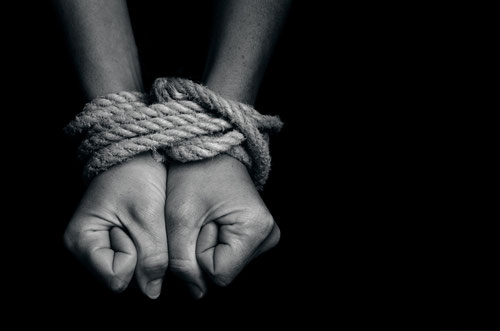What is a phobia?
A phobia is an exaggerated and irrational fear.
The term ‘phobia’ is often used to refer to a fear of one particular trigger. However, there are three types of phobia recognized by the American Psychiatric Association (APA). These include:
Specific phobia: This is an intense, irrational fear of a specific trigger.
Social phobia or social anxiety: This is a profound fear of public humiliation and being singled out or judged by others in a social situation. The idea of large social gatherings is terrifying for someone with social anxiety. It is not the same as shyness.
Agoraphobia: This is a fear of situations from which it would be difficult to escape if a person were to experience extreme panic, such being in a lift or being outside of the home. It is commonly misunderstood as a fear of open spaces but could also apply to being confined in a small space, such as an elevator, or being on public transport. People with agoraphobia have an risk of panic disorder.

Symptoms
A person with a phobia will experience the following symptoms. They are common across the majority of phobias:
- a sensation of uncontrollable anxiety when exposed to the source of fear
- a feeling that the source of that fear must be avoided at all costs
- not being able to function properly when exposed to the trigger
- acknowledgment that the fear is irrational, unreasonable, and exaggerated, combined with an inability to control the feelings
A person is likely to experience feelings of panic and intense anxiety when exposed to the object of their phobia. The physical effects of these sensations can include:
- sweating
- abnormal breathing
- accelerated heartbeat
- trembling
- hot flushes or chills
- a choking sensation
- chest pains or tightness
- butterflies in the stomach
- pins and needles
- dry mouth
- confusion and disorientation
- nausea
- dizziness
- headache
Complex phobias
A complex phobia is much more likely to affect a person’s wellbeing than a specific phobia.
Types
The most common specific phobias include:
- Claustrophobia:Fear of being in constricted, confined spaces
- Aerophobia:Fear of flying
- Arachnophobia:Fear of spiders
- Driving phobia:Fear of driving a car
- Emetophobia:Fear of vomiting
- Erythrophobia:Fear of blushing
- Hypochondria:Fear of becoming ill
- Zoophobia:Fear of animals
- Aquaphobia:Fear of water
- Acrophobia:Fear of heights
- Blood, injury, and injection (BII) phobia:Fear of injuries involving blood
- Escalaphobia:Fear of escalators
- Tunnel phobia:Fear of tunnels
These are far from the only specific phobias. People can develop a phobia of almost anything. Also, as society changes, the list of potential phobias changes. For instance, monophobia is the fear of being without a cell phone or computer.
As described in one paper, it is “the pathologic fear of remaining out of touch with technology.”
Causes
It is unusual for a phobia to start after the age of 30 years, and most begin during early childhood, the teenage years, or early adulthood.
They can be caused by a stressful experience, a frightening event, or a parent or household member with a phobia that a child can ‘learn.’
Specific phobias
These usually develop before the age of 4 to 8 years. In some cases, it may be the result of a traumatic early experience. One example would be claustrophobia developing over time after a younger child has an unpleasant experience in a confined space.
Phobias that start during childhood can also be caused by witnessing the phobia of a family member. A child whose mother has arachnophobia, for example, is much more likely to develop the same phobia.
Complex phobias
More research is needed to confirm exactly why a person develops agoraphobia or social anxiety. Researchers currently believe complex phobias are caused by a combination of life experiences, brain chemistry, and genetics.
They may also be an echo of the habits of early humans, leftover from a time in which open spaces and unknown people generally posed a far greater threat to personal safety than in today’s world.
How the brain works during a phobia
Some areas of the brain store and recall dangerous or potentially deadly events.
If a person faces a similar event later on in life, those areas of the brain retrieve the stressful memory, sometimes more than once. This causes the body to experience the same reaction.
In a phobia, the areas of the brain that deal with fear and stress keep retrieving the frightening event inappropriately.
Treatment
Phobias are highly treatable, and people who have them are nearly always aware of their disorder. This helps diagnosis a great deal.
Speaking to a psychologist or psychiatrist is a useful first step in treating a phobia that has already been identified.
If the phobia does not cause severe problems, most people find that simply avoiding the source of their fear helps them stay in control. Many people with specific phobias will not seek treatment as these fears are often manageable.
Medications
The following medications are effective for the treatment of phobias.
Beta blockers: These can help reduce the physical signs of anxiety that can accompany a phobia.
Side effects may include an upset stomach, fatigue, insomnia, and cold fingers.
Antidepressants: Serotonin reuptake inhibitors (SSRIs) are commonly prescribed for people with phobias. They affect serotonin levels in the brain, and this can result in better moods.
Behavioural therapy
There are a number of therapeutic options for treating a phobia.
Desensitization or exposure therapy: This can help people with a phobia alter their response to the source of fear. They are gradually exposed to the cause of their phobia over a series of escalating steps. For example, a person with aerophobia, or a fear of flying on a plane, may take the following steps under guidance:
- They will first think about flying.
- The therapist will have them look at pictures of planes.
- The person will go to an airport.
- They will escalate further by sitting in a practice simulated airplane cabin.
- Finally, they will board a plane.
Cognitive behavioural therapy (CBT): The doctor, therapist, or counselor helps the person with a phobia learn different ways of understanding and reacting to the source of their phobia. This can make coping easier. Most importantly, CBT can teach a person experiencing phobia to control their own feelings and thoughts.

